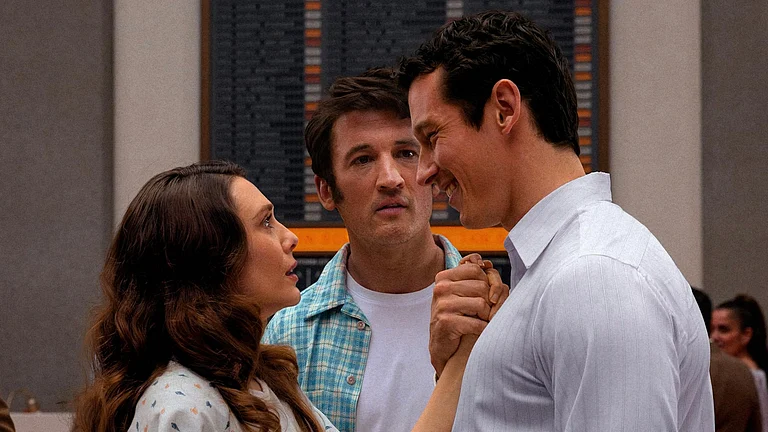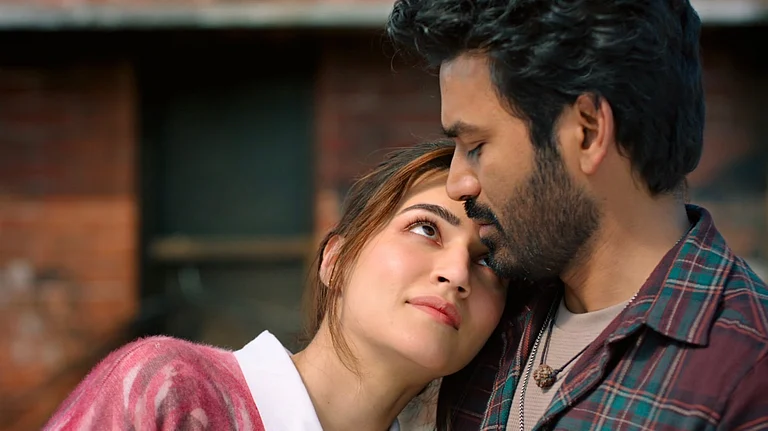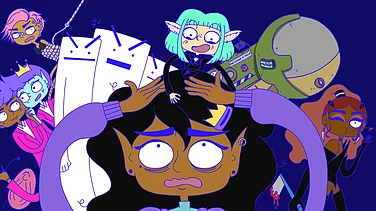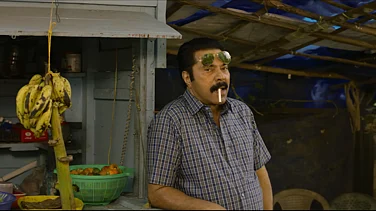
Icelandic filmmaker Hlynur Pálmason serves as both the director and cinematographer of The Love That Remains (2025)
The film earned the Palm Dog Award at Cannes 2025 for its scene-stealing canine, Panda.
Premiering at the Dharamshala International Film Festival 2025, the film received a warm response from audiences laughing and grieving in equal measure.
Hlynur Pálmason’s The Love That Remains (2025) had its India premiere at the Dharamshala International Film Festival this year in the feature narratives category. The film moves with the quiet rhythm of memory, following a family as they adjust to the ache and adaptation that trails after divorce. Pálmason builds the film with the precision of a painter and the heart of a poet, gathering fragments of domesticity—conversations, silences, the clatter of dishes, a half-glance across the table—and stitching them into something that feels organic and deeply inhabited. His camera lingers with patience, allowing every scene to breathe, so the audience can live inside the family’s shifting world, rather than merely observe it.

Magnus (Sverrir Gudnason), a fisherman, and Anna (Saga Gardarsdottir), an artist, have decided to part ways; yet their separation is full of interruptions and it remains elusive why they have separated. Although more important questions start arising for us to ponder upon. The film opens with a scene wherein the roof of Anna’s gallery is lifted off, as the space is taken away for development. The couple’s tug-of-war isn’t loud or theatrical—it unfolds in small gestures, in moments of unease disguised as calm. Magnus still drifts in and out of her home, trying to preserve an illusion of familiarity. But Anna has moved inward, toward solitude, toward a life that belongs to her.
What sets the film apart is its refusal to dramatize conflict in the way most marital dramas do. There are no grand confrontations or reconciliations. Instead, there’s an unspoken understanding that love, once transformed, doesn’t vanish but simply rearranges itself into something less certain, more mysterious. The three children—Ída, Grímur, and Þorgils—exist at the heart of this uncertainty. They laugh, shoot (ouch), quarrel, paint, and grow, serving as the film’s emotional barometer. Their bond with each parent remains intact, though its emotional texture keeps changing, much like the Icelandic seasons that mark the film’s progression.

Throughout, the narrative drifts between stark realism and dream. A giant rooster appears from the garden, a scarecrow turns into a quiet omen, and the family dog Panda (who won the Palm Dog at Cannes 2025) becomes a symbol of stability amidst shifting loyalties. These interruptions lend the film an air of magical realism without breaking its emotional honesty. They feel like intrusions from the subconscious, reminding us that separation isn’t purely practical—it’s spiritual, often absurd, and occasionally funny.
Pálmason’s Iceland, captured in sprawling, painterly compositions, mirrors the family’s emotional landscape. The earth looks bruised yet alive. Mushrooms burst from the soil, berries stain hands purple, and the sea heaves in slow rhythm, echoing the pulse of the story. The environment is a witness. Every rusted trawler, every melting icicle that the camera lingers on, carries the residue of memory. His camera often cuts away from people to rest upon texture—wood, wind, water— to perhaps suggest that life (nature and the world) continues on even when relationships falter.

The film is arranged as a series of vignettes spread over a year, with no rush to reach resolution. Meals turn from cheerful to strained in a heartbeat. A picnic scene, bright and airy, suddenly slips into erotic melancholy when Magnus catches a fleeting upskirt glimpse of Anna and remembers what used to be. Later, a whimsical daydream of an obnoxious gallerist’s plane crash reveals Anna’s simmering frustration with the world’s pretensions. Pálmason balances the tragic and the comic with enviable ease, letting absurdity and domestic mundanity sit side by side with heartbreak.
For some, the film’s slow rhythm might seem indulgent, but that slowness is its essence. Time itself becomes a character, stretching and folding as love decays and reforms. The film doesn’t seek to explain why relationships fail; it asks what remains when they do.
What’s remarkable is how The Love That Remains manages to stay hopeful without being sentimental. There’s laughter in the kitchen, children running through the fields, art being made out of leftover pain. Pálmason allows space for humor and healing, reminding us that heartbreak can coexist with beauty. What remains is love itself, reshaped and reframed, no longer romantic perhaps, but still alive in gestures, in care, in the act of staying kind.
By the time the seasons turn, we realise that Pálmason has crafted more than a film about divorce. The film proves to be a cinematic meditation on continuity—the strange endurance of affection, the persistence of family, and the quiet heroism of moving forward. The Love That Remains isn’t a story about endings, but about the subtle grace of surviving them.


























